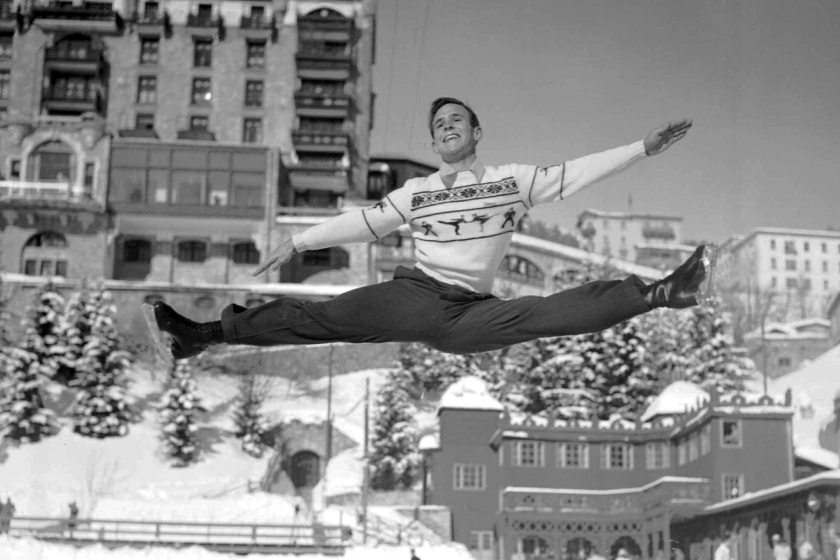They Trip the Ice Fantastic : Colette Huber and Ron Kravette Take Their Dancing Skills to U.S. Nationals
- Share via
For two years, ice dancer Colette Huber was without a partner.
For more than four years, Ron Kravette did not skate competitively, and thus had no need for one.
Boy meets girl is nothing compared to solitary ice dancer finds partner. They met and they skated, and now they are one of 15 teams competing in the senior ice dance division of the U.S. Figure Skating Championships in Tacoma, Wash. They begin competition today.
In between there was a lot of ice time. Huber, 21, and Kravette, 23, who began skating together 2 1/2 years ago, have been training in the Ice Capades Chalet at Costa Mesa and in the Iceland Skating Rink at Paramount in preparation for the national championships.
Last year, they won the junior national title at the U.S. Figure Skating Championships at Uniondale, N.Y. In April, they passed a skills test that moved them into the seniors division. They finished ninth in their first seniors competition at the U.S. Olympic Festival last summer at Houston.
Huber, a student at Woodbury College in Los Angeles, for two years could not find a partner with whom she skated well.
Kravette, who lives in Costa Mesa, had stopped skating when he entered Estancia High School at 15 because an older sister skated competitively. With the bills for lessons--which run about $50 an hour--and ice time coming in, he decided that one skater in the family was enough. After graduating from UC Irvine, when Kravette felt able to pay his own way, he again took up competitive skating.
Huber and Kravette first skated together at the suggestion of Darlene Gilbert, who had coached each of them before. “One of the unique things about Ron and Colette is that--from the first--they had a sort of natural unison,” said Gilbert, who was a national champion ice dancer in the 1960s. “Sometimes that never happens, although you can try to teach it.”
Gilbert says that Huber and Kravette have what is known as a natural line--they do extensions the same way, with the same height of the legs.
“The lines of their bodies match nicely, and they have the same feeling,” Gilbert said.
Ice dance is a division of competitive skating separate from the more acrobatic pairs skating. Ice dance, popularized by the British team of Jayne Torvill and Christopher Dean at the 1984 Winter Games, stresses aesthetics, with more emphasis on interpretation and less on athletic moves, which are restricted.
In a sport in which you cannot go it alone, the search for partners is extremely competitive. Other skaters have approached both Huber and Kravette, who live in Costa Mesa, attempting to lure them away from each other. There are queries and solicitations, and it seems there is always someone who wants your partner.
The difficulty is not so much finding a partner as finding one who skates well.
“You can always get along with a person,” said Kravette, who has a telemarketing job in the evenings to support his skating. “It’s the skating that matters.”
Having won the junior national title doesn’t mean that much when moving into the seniors division, they said.
“Just passing the test doesn’t mean you’ll do well,” Huber said.
Said Kravette: “To pass the test you have to be as near to perfect as you can. To do well at nationals you have to be 1,000 times better.”
After the nationals, Kravette and Huber will travel to Czechoslovakia in late February to compete in the World University Games.
More to Read
Go beyond the scoreboard
Get the latest on L.A.'s teams in the daily Sports Report newsletter.
You may occasionally receive promotional content from the Los Angeles Times.






